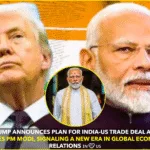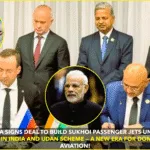In a landmark development on May 13, 2025, U.S. President Donald Trump signed a historic $142 billion arms agreement with Saudi Arabia, marking the largest defense deal in American history. This agreement is a central component of a broader $600 billion investment package aimed at enhancing bilateral ties across defense, technology, and infrastructure sectors.New York Post+1Reuters+1
Defense Deal Details
The arms deal encompasses advanced military hardware and services from over a dozen U.S. defense contractors, including Lockheed Martin, Boeing, and Raytheon. Key components of the agreement include:
- C-130J Super Hercules military transport aircraft
- THAAD (Terminal High Altitude Area Defense) anti-ballistic missile systems
- Patriot PAC-3 missile defense systems
- MQ-9B SeaGuardian reaper drones for surveillance and precision strikes
While discussions about the sale of F-35 stealth fighter jets have taken place, no confirmation has been made regarding their inclusion in the deal .Reuters
President Trump emphasized that this agreement would bolster Saudi Arabia’s defense capabilities, particularly in countering regional threats, and would also support the U.S. economy by sustaining jobs in the defense sector.
AI and Technology Collaborations
Simultaneously, major U.S. tech companies, including NVIDIA, Google, and AMD, secured significant contracts to advance Saudi Arabia’s ambitions in artificial intelligence and technology.
- NVIDIA announced a partnership with Saudi AI firm Humain, backed by the Public Investment Fund (PIF), to supply semiconductors for a 500-megawatt AI data center initiative. This deal involves the delivery of several hundred thousand advanced GPUs over the next five years .
- AMD also entered into a multi-billion-dollar agreement with Humain, signaling a strategic shift in global AI chip demand towards the Middle East, especially after setbacks in China .
These collaborations are part of Saudi Arabia’s broader vision to position itself as a global leader in AI and technology, aligning with its Vision 2030 initiative.
Strategic and Economic Implications
The $600 billion investment package, which includes the arms deal and tech partnerships, reflects a deepening of U.S.-Saudi relations. Beyond defense and technology, the package encompasses investments in energy, infrastructure, and other sectors.
During his visit, President Trump also announced plans to lift long-standing sanctions on Syria, a move requested by Saudi Crown Prince Mohammed bin Salman. This decision indicates a potential shift in U.S. foreign policy in the region .Time+2Reuters+2news.com.au+2
The agreements are expected to have significant economic impacts, including job creation in both countries and the advancement of Saudi Arabia’s technological capabilities.
As the Middle East continues to evolve as a hub for defense and technology, these developments underscore the strategic importance of U.S.-Saudi partnerships in shaping regional and global dynamics.










